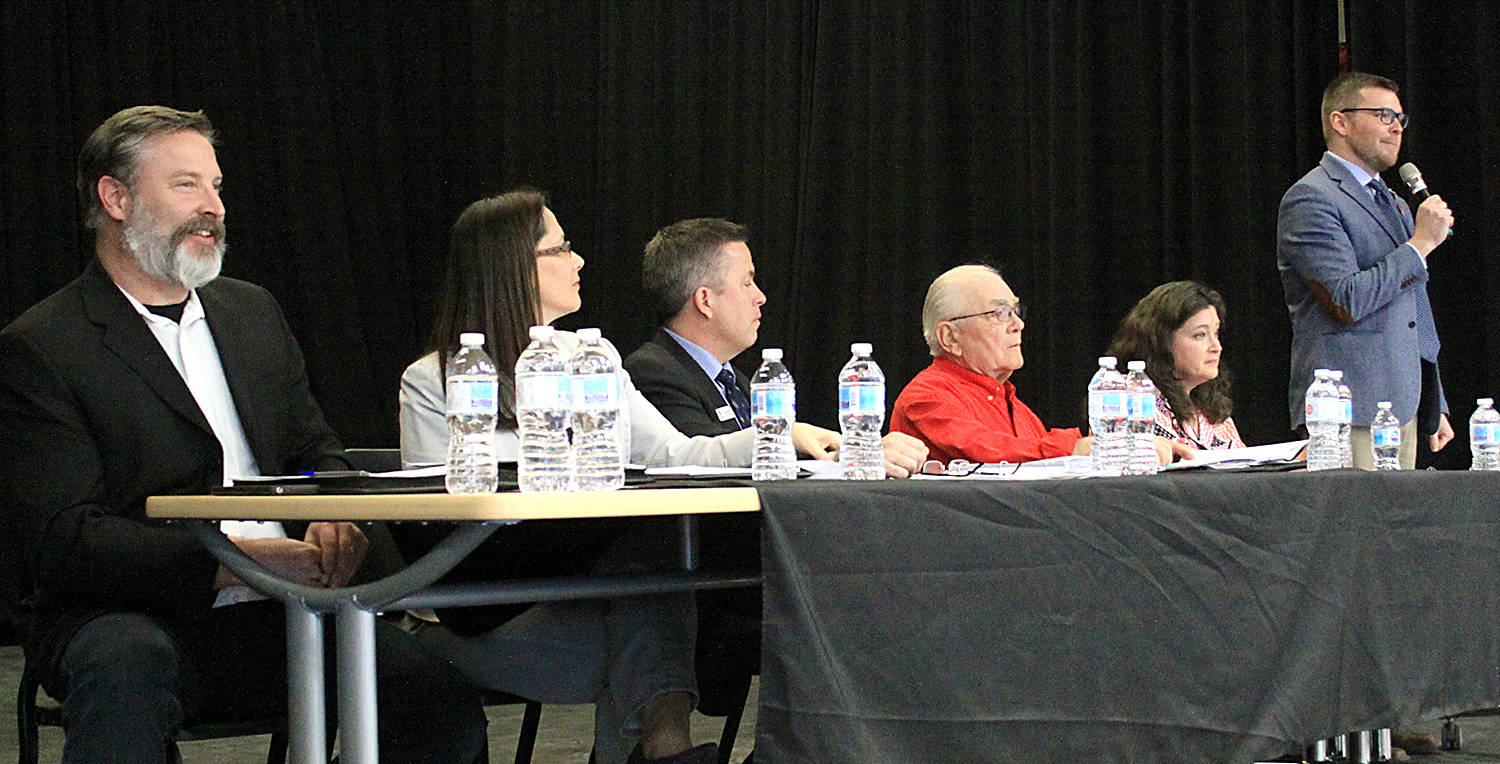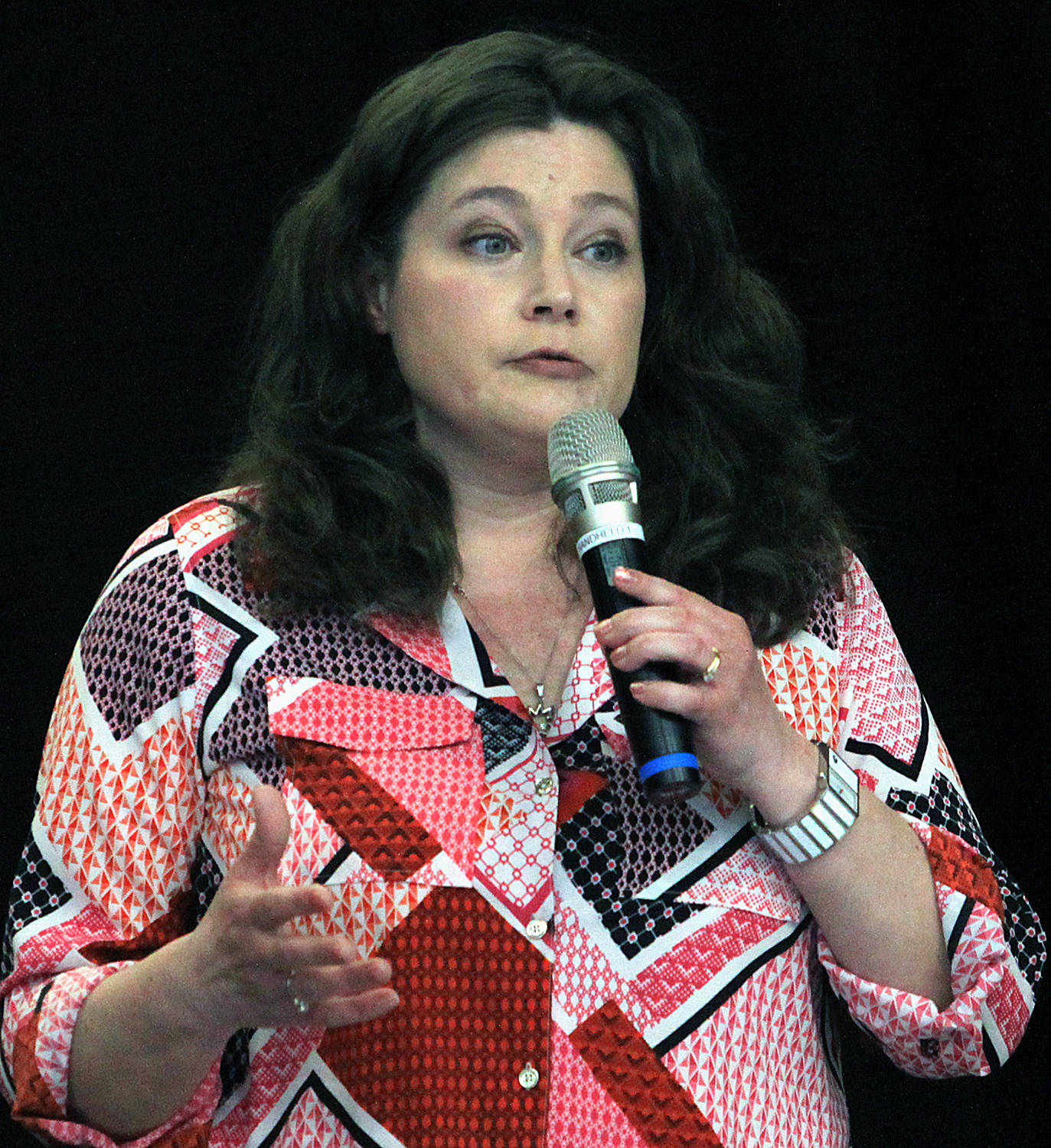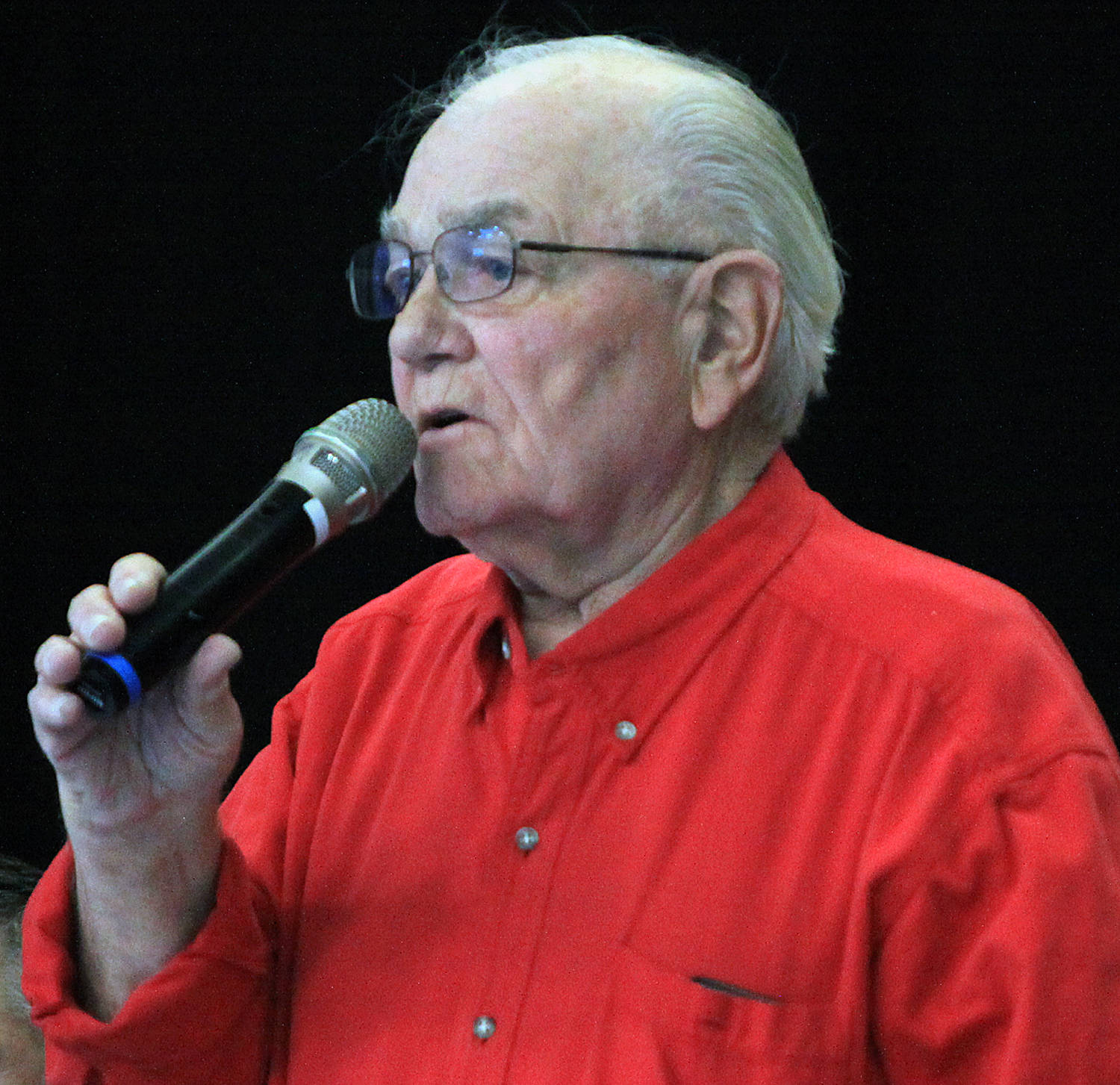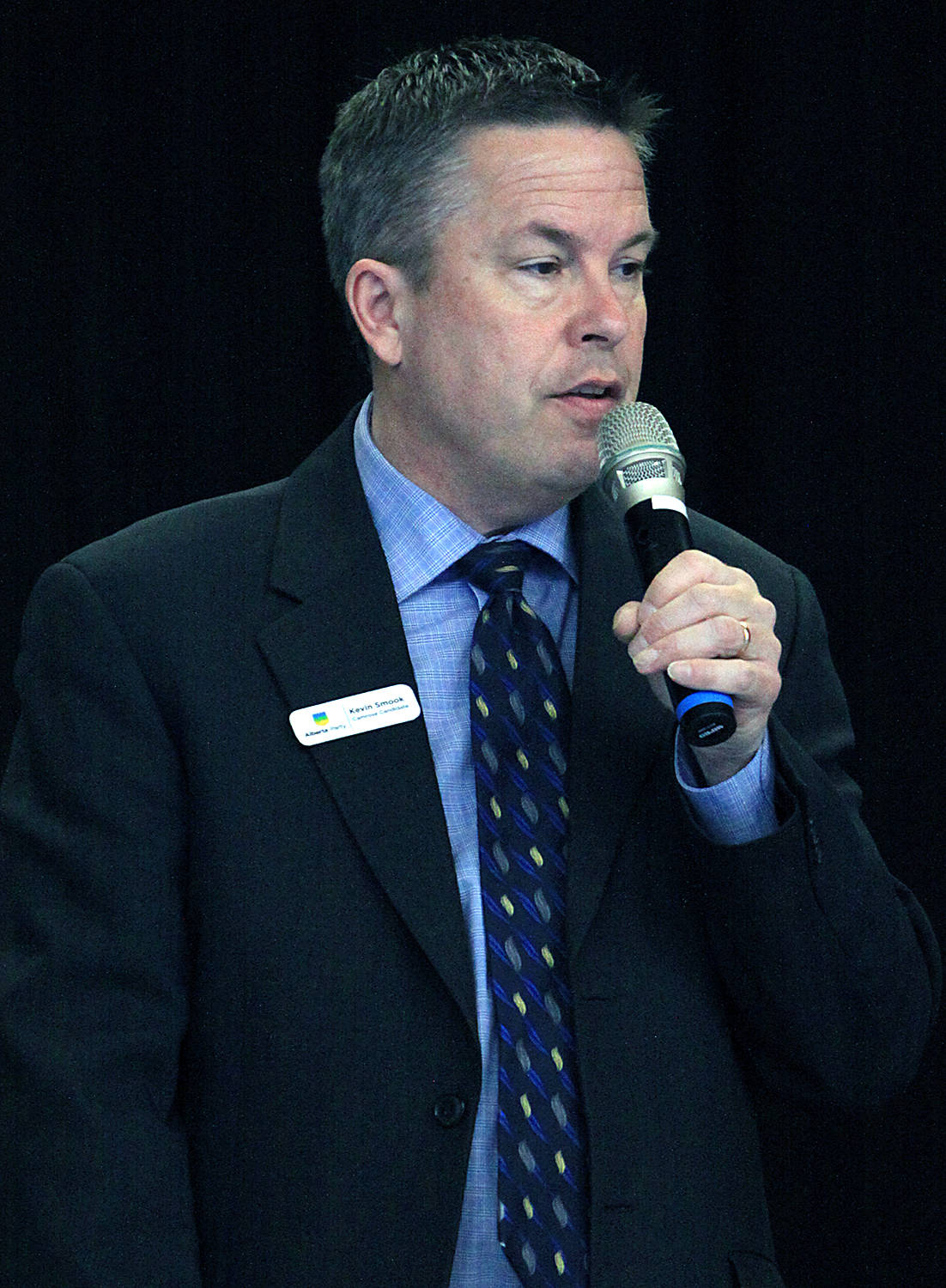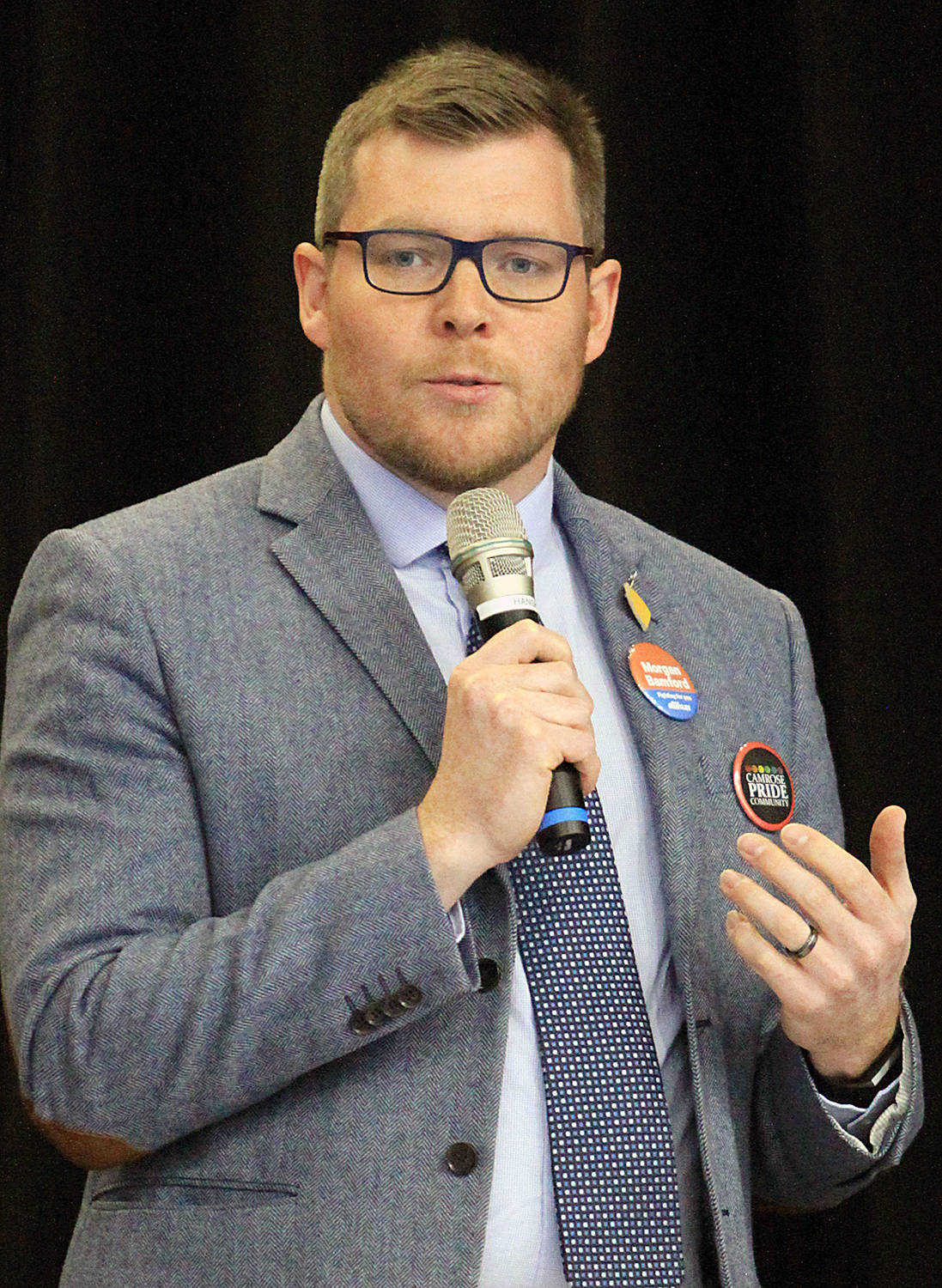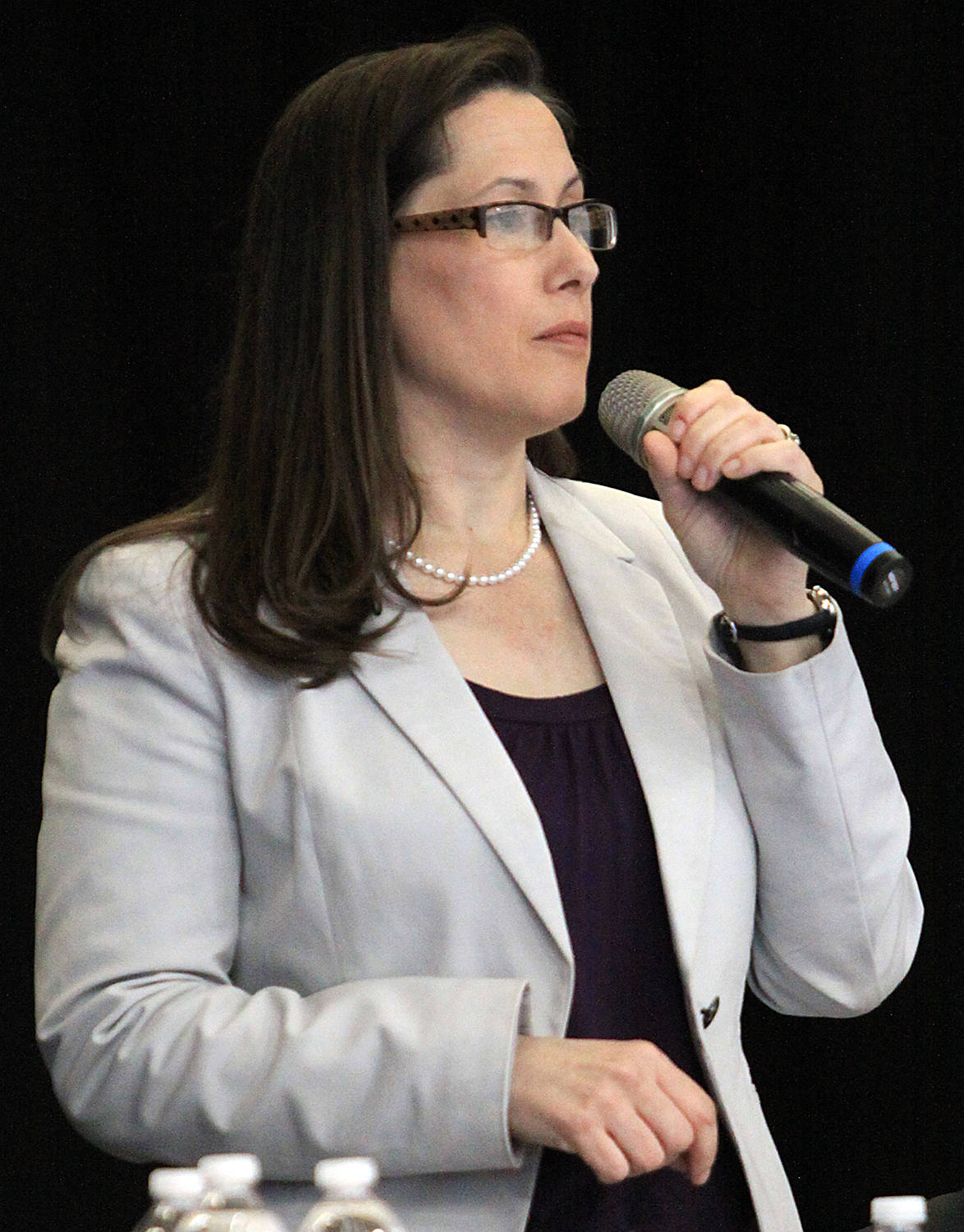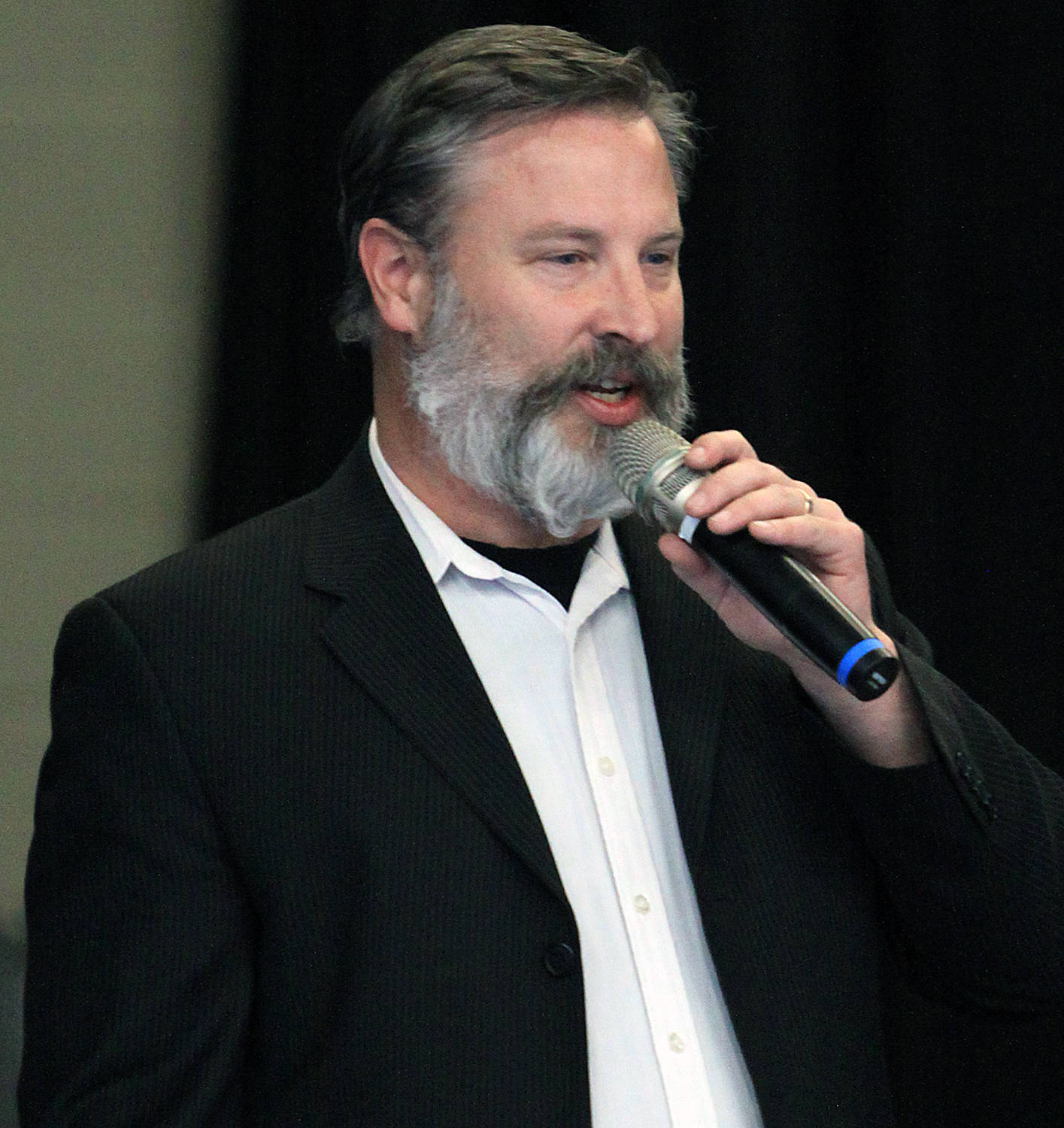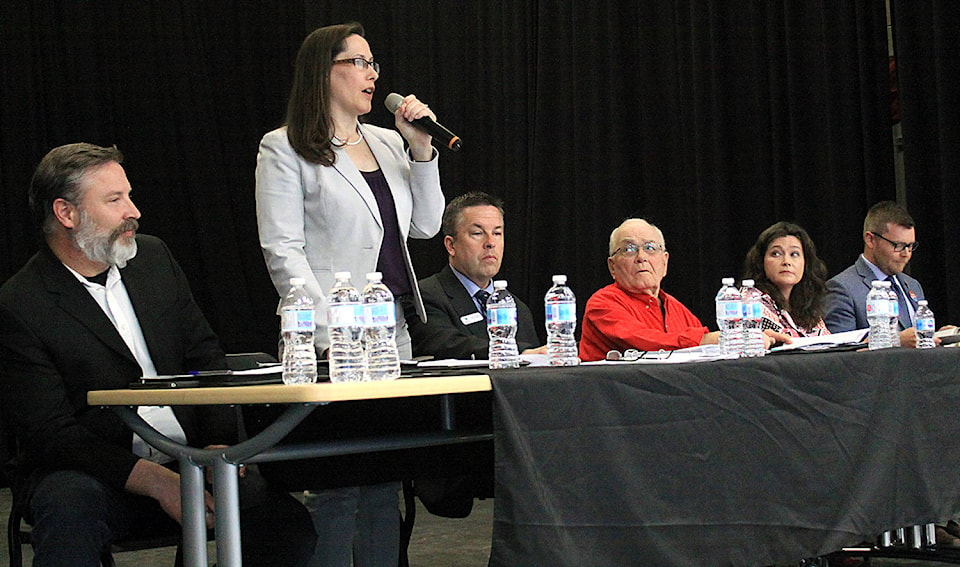Unlike the provincially broadcast party leaders debate, the election forum at Bashaw School was a cordial and respectful affair while also being very informative for the audience.
Six of the seven candidates running in the Camrose riding participated in the event co-sponsored by the Battle River School Division and Local 32 of the the Alberta Teachers Association.
As the constituency is new — having been redrawn during by the boundary commission last year as part of the redistribution from seven to six ridings in east central Alberta — there is no incumbent, which leaves the riding up for grabs.
Racing for the MLA spot include Morgan Bamford (NDP), Kevin Smook (Alberta Party), Sandra Kim (Alberta Advantage Party), Wes Caldwell (Freedom Conservative Party), Don Dubitz (Alberta Independence Party) and Bonnie Tanton who is running as an independent.
Conspicuously absent from the forum was the other candidate vying to represent the riding — the UCP’s Jackie Lovely, who explained to organizers she had another engagement to attend.
Now the format of this forum was different from most, in that five predetermined questions were presented to the candidates based upon themes that were deemed more relevant to small rural areas. Time was also allocated for questions from the audience.
Education
This was the first theme covered with candidates asked about how they plan to keep quality public education.
Kim feels it’s crucial to get students back to learning and understanding the basic fundamentals, “and that advancements in technology is a great way for rural students to have access” to any education they want.”
Parent choice and finding money to fund education through government efficiency is the hallmark for Caldwell’s party. “Public, private or separate — we will make sure the funding follows the student,” he said. “We feel the money can be found without cutting front line services.”
Smook meanwhile, feels education should be a priority for all parties and are promising to expand upon current instructional levels. “We will double the number of educational assistants to provide more supports for students, more help for teachers and ultimately, make it easier for kids to learn,” he said. Additionally, the party is promising more money midway through the year, reduce class size, review rural school funding and construct more schools.
As for Tanton, harnessing the power of the Internet to create more virtual classrooms that would provide a collaborative learning environment while increasing the use of e-textbooks — something especially important for small schools with limited subject selection.
This topic was one of the few that Dubitz decided to answer, noting his party would use the estimated $40 billion it would no longer send in transfer payments to keep schools adequately maintained and staffed.
For Bamford, continuing to fund growth in enrollment while ensuring appropriate staffing levels plus modernizing materials and curriculum is key to a great education.
“Believe it or not, some resources are older than I am and that’s not right,” he stated. “We also want schools and their communities can benefit from investment in infrastructure like this beautiful school.”
Rural viability
Encouraging reinvestment in communities is the goal for Smook and the Alberta Party — through funding and supporting other services and businesses — that will keep people and families in rural communities as opposed to gravitating to larger centres.
Tanton though feels at multi-pronged approach is necessary to keep rural areas alive and well. “Upgrading our high-speed Internet throughout our rural areas to the level of the cities or better and expanding the Clean Energy Improvement Program are part of keeping our communities vital,” she stated.
The NDP promises, Bamford noted, that will help are through a new program designed to upgrade recreational facilities as well as a 10-year plan to deliver high-speed Internet to all of Alberta. He added continued funding for community organizations — such as ag societies and rural crime watch — will be an important part of help rural areas to thrive.
For Caldwell’s party, giving communities back the authority and power to come up with their own solutions would be the route to enhancing life in rural regions.
Kim took a shot at the NDP platform, noting facilities mean nothing if families leave due to a lack of jobs. This means diversifying the economy, which could partially be done by implementing her party’s program to redevelop orphaned wells to produce electricity.
Health care
Consulting with people, whether on delivery and levels of service or other subjects like job, is a main focus for Tanton — mostly due to wanting to ensure their voices are heard at the provincial legislature since she would be sitting as an independent if she won. “So, I can help determine the needs of our constituency are. I need input from you,” she added. Tanton also took a poke at the UCP, stating the suggest budget freezes would do nothing but harm to people, but the infrastructure deficit needs to be addressed and incentives provided to draw health professionals to stay in rural regions.
Keeping hospitals open and providing a rural transportation network to those that need help getting to medical care are among the initiatives Dubitz would try to have implemented, noting it would be easier to finance once the province is out from under the thumb of the federal government and no longer sending an estimated $40 billion to other provinces.
Having access close to home is the NDP goal, which Bamford explained his party would continue to work toward via further investments in increasing and improving front-line services. “We are not going to cut it like the UCP is proposing,” he said. As well, the NDP’s plan is to keep working with Alberta Health in allocating resources and create a universal pharmacare program dedicated to low and middle income seniors.
Going back to getting of waste and redundancy in government operations, Caldwell believes enough can be found to fully fund health care. “I would also push for innovative delivery mechanisms like midwives and try as much as possible to let communities have a say in the allocation of local services,” he said.
Kim’s experiences living in areas with little to no health services gives her a unique understanding, meaning good preventative measures — increasing research and better promotion of healthier lifestyles — and increasing front-line staff are keys in her platform. This includes more home care visits by doctors, which will reduce visits to hospitals.
Moving to a decentralized model is where Smook and the Alberta Party want to go, so that decision-making is done locally while also giving front-line staff the ability change in order, “to enhance service delivery, improve patient outcomes and reduce costs.” He also focused on the necessity to create far more long-term care beds so that those that are taking up acute care hospital beds while waiting for a spot to open up in other facilities can be moved. This, he noted, would free up beds and assist in decreasing surgical wait times.
Environment
While not the hot topic of the night, there was a definite split on whether the ‘carbon levy’ is doing what it was proposed to do. Caldwell, Smook, Dubitz and Kim would all dump it while Tanton and Bamford would maintain it.
“I’m in favour of keeping our carbon tax dollars in Alberta so that we can direct those dollars where we need them to go,” Tanton said, such as to renewable energy research and helping individuals, adding it is preferable to scraping it and having to send money to Ottawa as part of the federally imposed carbon tax.
Bamford also felt keeping the levy and using those funds to continue with the NDP’s climate leadership plan, stating he is proud of the “made-in-Alberta solution” to reduce carbon emissions while improving energy efficiency and create jobs in emerging and new industries.
On the opposite side, Caldwell — a biologist — explained the levy is not preventing pollution or protecting the environment, but is instead a form of corporate welfare for projects that aren’t viable by themselves.
Kim stated other countries have or are getting rid of their carbon tax, proving it doesn’t work. She did provide a solution — exporting Canada’s top of the line coal scrubbing technology to China and India which are dramatically expanding burning of coal for electricity. “Our technology reduces emissions by 85 per cent. We can really make an impact on global emissions and save the environment and our economy,” she stated.
From Smook, the levy would only remain on “heavy emitters” that produce over 100,000 tonnes of greenhouse gases. That money would go to fund Energy Efficiency Alberta initiatives.
Economy
Bamford got first crack at this issue, pushing forth the NDP’s fight to create jobs by getting the Trans-Mountain pipeline construction and the plan to attract billions of investment dollars through incentives to increase refining and upgrading capacity plus develop other petro-chemical production. “We want those good manufacturing jobs here at home that sustain families and provide the promise of a future. We want full value for our natural resources,” he said.
Business, not government, is what Caldwell feels should drive the economy — through innovation and by helping to drive down operational costs.
Going back to the orphaned well program, Kim explained it would be up and running within three months if her party formed the government. “We have 50,000 across the province and they are profitable for the small to mid-sized producers. Handing them over at a discounted rate and have them producing electricity now, would help reduce transmission costs, put people back to work and generate a five per cent royalty, she added.
While deriding the NDP wait on Trans-Mountain, Smook dished up his party’s plan to help develop and construct a combined rail and pipeline transportation corridor for Alberta oil through Alaska. He added there is also a plan to expand value-added agricultural opportunities.
jordie.dwyer@ponokanews.com
Like us on Facebook and follow us on Twitter
